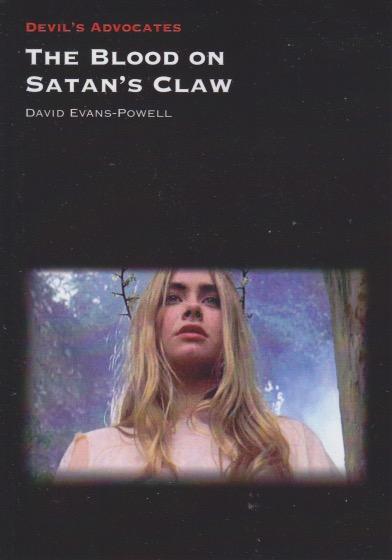
The Devil’s Advocates series consists of short books focused on a single horror film. For horror fans they’re a great resource, as they will hopefully also be in teaching settings. David Evans-Powell’s recent volume on The Blood on Satan’s Claw is a fine example of just how intelligent horror can be, and how it can be interpreted so. This particular movie from the early seventies was never a major revenue earner, but that in itself is a lesson. Influence, measured in smaller scales, can still create an impact on people’s lives. Evans-Powell’s treatment takes several angles, each of which casts light on this unusual movie. Reading this little book brought quite a few ideas to mind, both about social structures and religion. The film is set in the early 18th century, with a city judge who is problematic actually saving the day.
Since The Blood on Satan’s Claw is folk horror, quite a bit of the discussion focuses on landscape. Paying close attention to landscape reveals hidden information. It becomes almost a character. At the risk of too many spoilers, the film is about uncovering Satan—or a demon, it’s not terribly clear on the point—from a farm field. As this evil character gains power the local children are drawn to him and the village authorities are unaware of what’s going on in the nearby woods. Landscapes reveal and conceal as the creature gains power and the children engage in acts of violence. The response of the judge is a violence of its own. The movie doesn’t really deliver all that it promises in that regard, but Evans-Powell explains how the film was made and that, in turn, explains some of the rough edges.
Religion and horror go naturally together. I suppose any film with “Satan” in the title will address religion somehow. Not all horror is religious, of course, but many of our fears derive from religious subjects. It’s almost as if as we ceased to fear the landscape—nature having been tamed to some degree—we began to find fear in religious thinking. Put another way, religion has kept fear alive. The Blood on Satan’s Claw was never a major, big-budget release. Except for fans of British horror it has largely escaped notice. Folk horror, because of its recent revival, brought interest back to some of these older efforts to explore such themes, many of them implying a religion hidden in the landscape. This book provide a useful map in exploring that territory.
